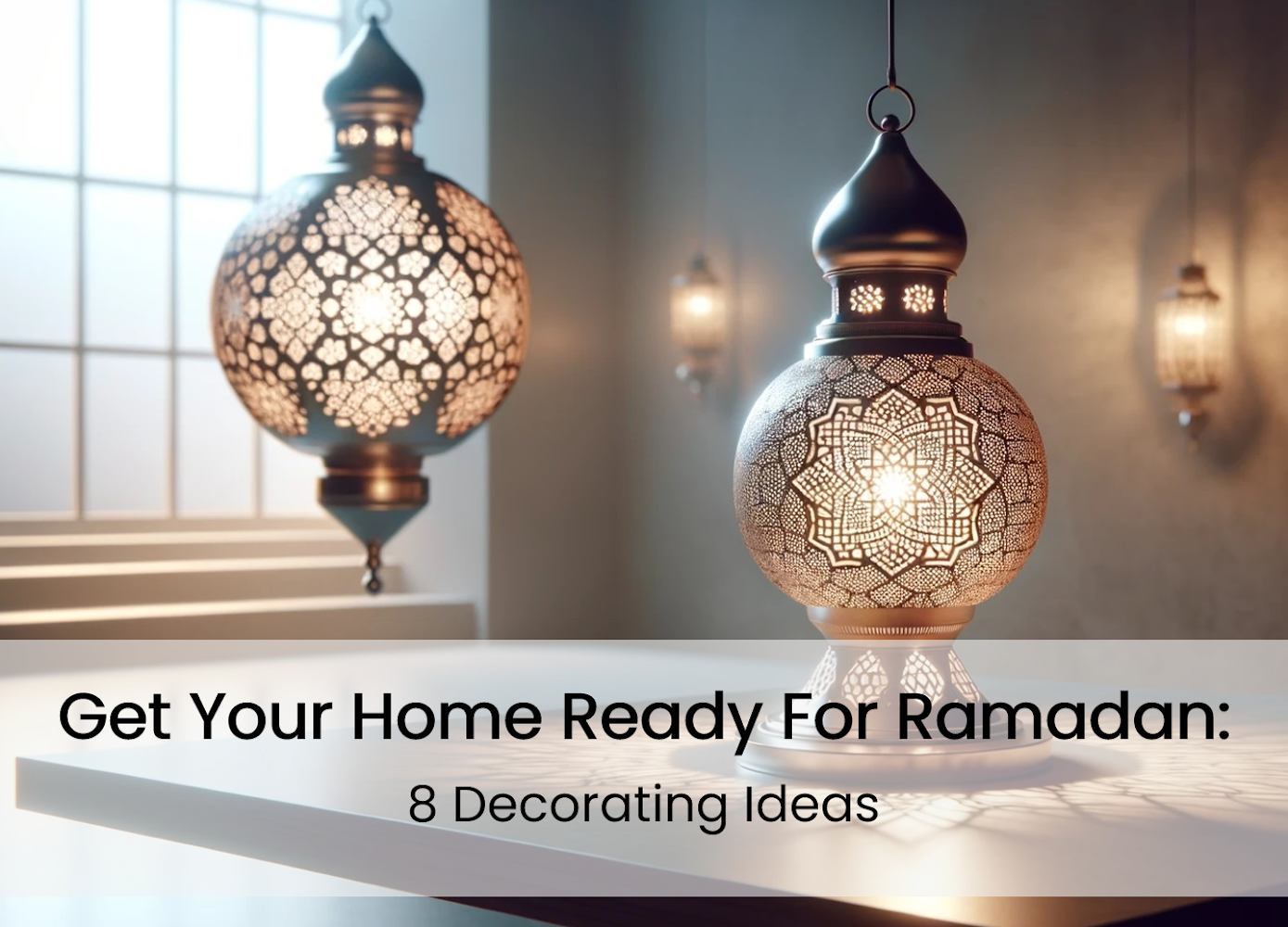
The holy month of Ramadan is a sacred month of prayer and fasting for over 1.9 billion Muslims around the world. It is the most blessed month of the year – the month when the Noble Qur’an was first revealed.
While Ramadan is a month of spiritual reflection and evenings of prayer, it is also a month of celebration filled with special moments amongst family and friends, and beautiful decorations. There’s no shortage of Ramadan decoration ideas, yet it’s with the right decorations that we can create a festive but calm atmosphere that will enhance your spiritual connection to Allah.
Before you go out and decorate your home this Ramadan, check out these eight simple ideas that will create the ultimate Ramadan atmosphere that embodies the love, joy, and spirituality that this month represents.
- Use indoor lights for warmth and glow
 Photo by WeHeartIt
Photo by WeHeartItCreate a warm and inviting atmosphere with a combination of lights. Drape string lights along your windows, doorways, and walls to add a festive touch to your home. Use warm white lights for a magical glow, or colors and shapes for a more fun look and feel.
Fairy lights can also be used in various places throughout your home, such as around mirrors, bookshelves, paintings, and so on. - Add carpets and rugs for a cozy and inviting atmosphere
 Photo by My Modern Dom
Photo by My Modern DomAnother great way to decorate your home for Ramadan is by adding carpets and rugs. They will instantly create a warm and inviting atmosphere that is ideal for the holy month, especially traditional oriental rugs with Islamic patterns.
Consider using rugs in your living room, dining room, and prayer space. You can play around with different textures and styles to create a cozy look and feel. And children just love their soft, comfortable feeling. - Enhance your ambiance with decorative candles and scents
 Photo by RemodelOrMove
Photo by RemodelOrMoveDecorative and scented Ramadan candles can add elegance and sophistication to your Ramadan decorations. They provide a warm and hospitable feeling to your home.
You can create a centerpiece for your dining table or living room. You also place candles throughout your home, such as in your hallway or entrance for a more welcoming feel to your space. If you worry about a fire hazard around young children, you can opt for electrical tea lights instead.
You can further enhance the ambiance by using incense and essential oils to create a relaxing atmosphere. Use traditional scents, such as oud, or rose, or choose scents that you and your family would enjoy. - Hang decorative Ramadan lanterns for a magical atmosphere
 Photo by Pallavi Partha
Photo by Pallavi ParthaThe traditional Arabian lantern is a popular and classic decoration during Ramadan. But if you’re looking to add more color to your space, consider using Moroccan lanterns instead.
You can place lanterns on tables, bookshelves, or windowsills to create a soft glow in your home. Or use decorative wall lamps, ceiling lamps, or hang a paper moon lantern from the ceiling to create a joyful and magical atmosphere at your home. - Decorate with flowers and greenery to add color and texture
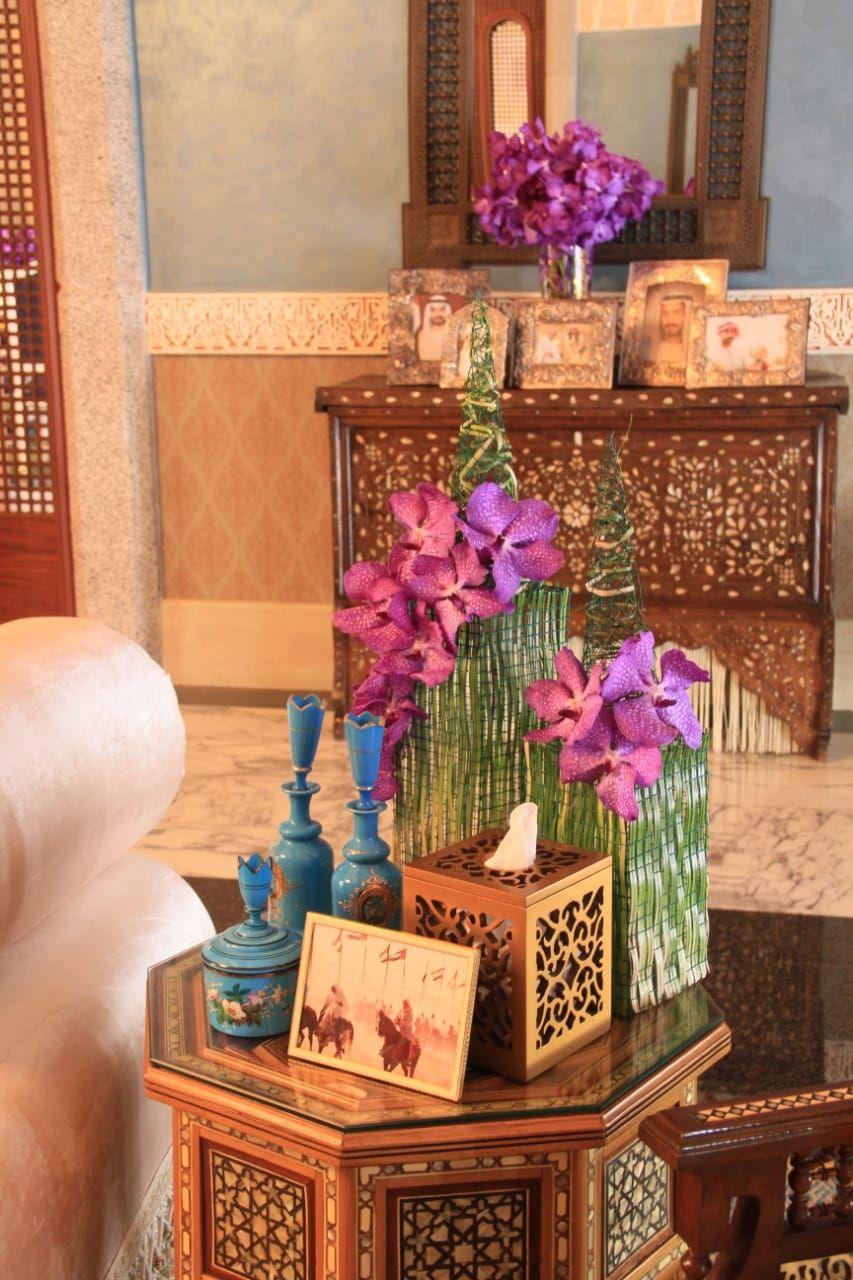 Photo by Worood
Photo by WoroodAdding plants and flower arrangements will add a natural and fresh look and feel to your space. You can choose plants that are easy to care for and place them in decorative pots, vases, or baskets. Fresh flowers can provide beautiful scents, colors, and textures to any space.
- Create a sacred prayer space
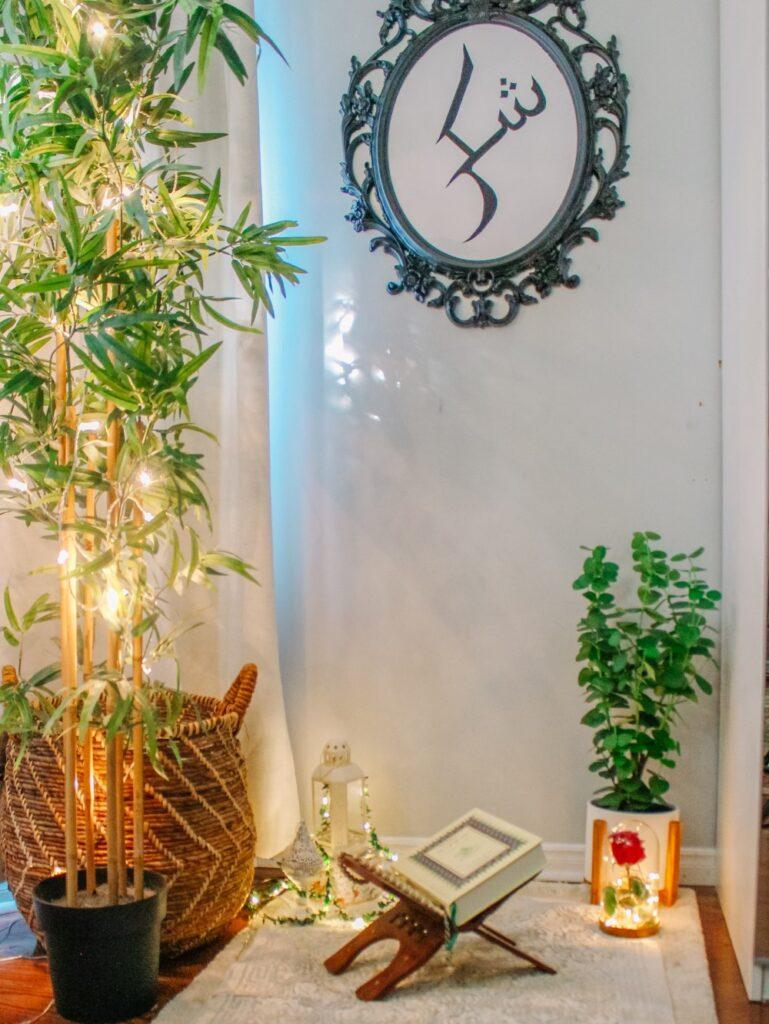 Photo by MuslimMoms
Photo by MuslimMomsCreate a sacred prayer space, if you don’t already have one. Setting up a designated prayer corner in your home is a beautiful and meaningful way to incorporate the spirit of Ramadan into your home.
Start by selecting a space that faces the direction of the Qibla. Declutter the space and section it off as a quiet worship area where you can feel a sense of peace and solitude. Then gather everything you need for prayer such as a prayer mat, prayer dress, and the Qu’ran. - Decorate your Ramadan iftar table and make your guests feel welcome
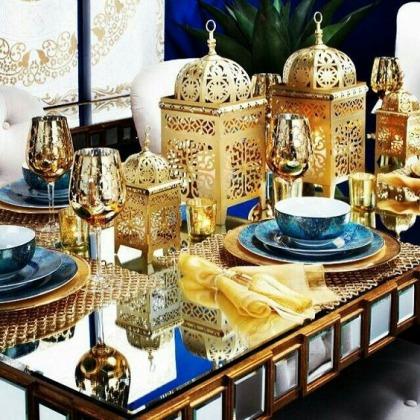 Photo by ExpatWoman
Photo by ExpatWomanNo iftar is complete without family and friends gathered around the table. To make your experience even more special and enjoyable, you can set up an inviting Ramadan iftar table that will make your guests feel welcome.
Start by choosing a theme for your iftar table, such as traditional Islamic patterns or colors. Add tablecloths and runners to your table for a sense of warmth and comfort.
For a more traditional look and feel, use traditional dishes and serving platters. You can also add dates, nuts, and other traditional snacks to the table. And consider adding candles or string lights to your table to create a soft and cozy atmosphere for your guests. - Add Islamic wall art to accentuate the importance of this sacred month
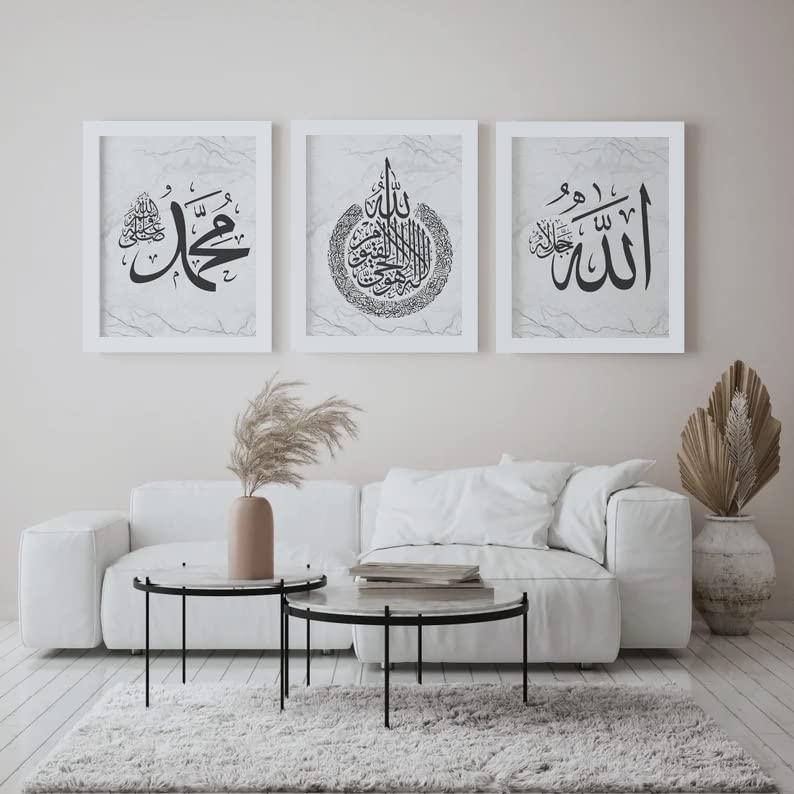 Photo by White Space
Photo by White SpaceIncorporating beautiful Islamic wall art will signify the importance of this holy month. Start by deciding on a specific wall or area in your home where you want to display your Islamic wall art. This could be in your living room, dining room, or hallway.
There are different types of Islamic wall art to choose from, including calligraphy, geometric patterns, and nature-inspired designs. Consider the overall style and theme of your home when selecting your art pieces, and choose pieces that are meaningful to you.
You can create a gallery wall by adding multiple Islamic art pieces. This can add visual interest and texture to your space, and can also be a great conversation starter for your guests.
